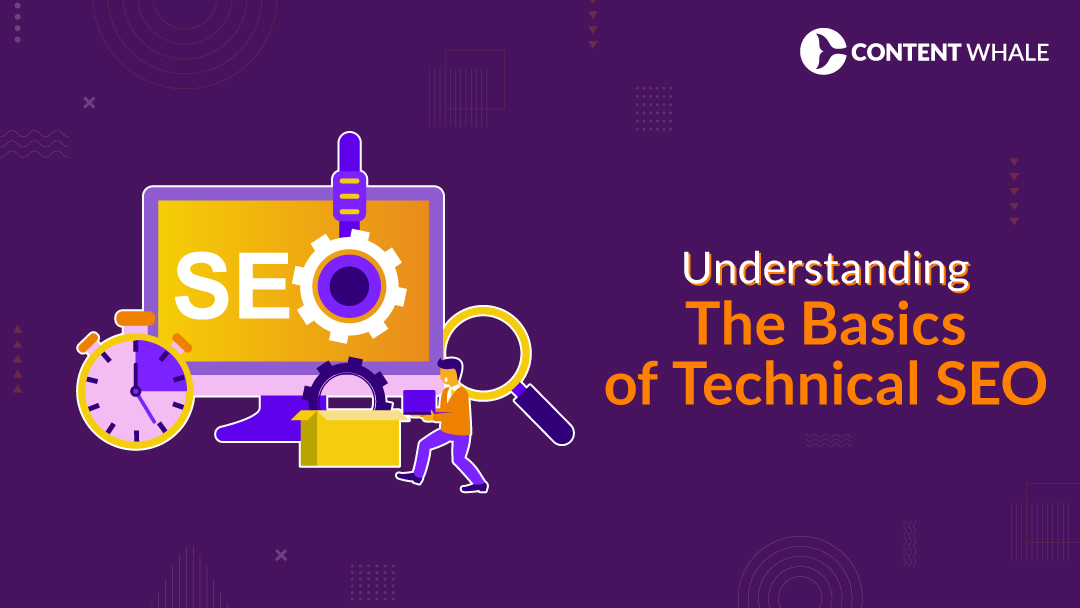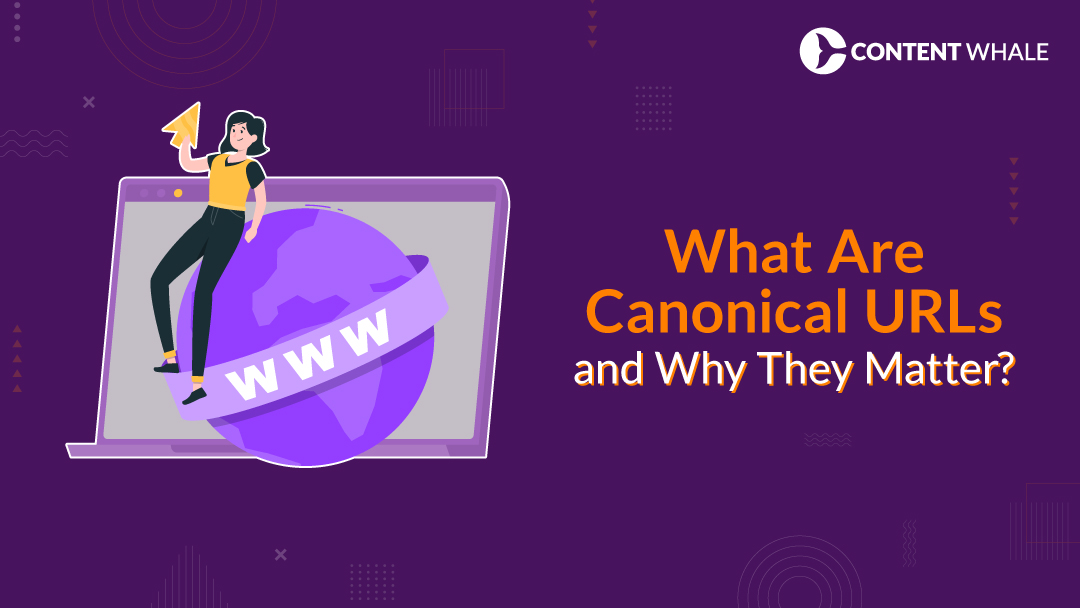Quick Summary
What is technical SEO? It involves optimizing your website for better search engine crawling and indexing. Key elements include site architecture, page speed, and mobile optimization. Implementing effective technical SEO strategies ensures improved website performance and higher rankings, making your site more accessible and user-friendly.
What is technical SEO? It involves optimizing your website’s technical aspects to enhance its ranking on search engine results pages (SERPs). By focusing on technical SEO basics, you ensure that search engines can effectively crawl, render, and index your site. This includes optimizing elements like site architecture, website performance, crawlability, and indexing. These optimizations are vital because they lay the groundwork for other SEO efforts to succeed.
Statistics highlight the significance of technical SEO. For instance, 33% of websites meet the Core Web Vitals threshold, which directly impacts user experience and search rankings. Additionally, 72% of marketers consider content relevancy a crucial factor, emphasizing the need for a well-optimized site structure.
Page speed is another critical aspect, as nearly 47% of consumers expect a webpage to load in 2 seconds or less. With mobile optimization becoming increasingly important, 59% of global internet traffic now occurs on mobile devices, making it essential for websites to perform well on mobile platforms.
Using HTTPS is also a key component, providing security and trustworthiness, which are important ranking factors. Transitioning to HTTPS has been a priority since Google identified it as a ranking factor in 2014.
A comprehensive technical SEO guide is crucial for building a strong online presence. Effective technical SEO strategies involve regular audits and updates to maintain optimal site performance.
By integrating technical SEO with on-page SEO, you create a robust, user-friendly website that performs well in search engines, driving more traffic and conversions. This holistic approach ensures long-term success and a better user experience.
What is Technical SEO?

It refers to optimizing a website’s technical aspects to improve its visibility and ranking on search engine results pages (SERPs). This optimization ensures that search engines can effectively crawl, render, and index your site, leading to better performance and higher rankings.
Technical SEO differs from on-page SEO, which focuses on content and keyword usage, and off-page SEO, which involves backlinks and social signals. Technical SEO basics include improving site architecture, ensuring proper crawlability and indexing, enhancing page speed, and implementing mobile optimization and HTTPS for secure connections.
The importance of technical SEO in digital marketing cannot be overstated. A technically optimized website provides a strong foundation for other SEO efforts. For instance, if search engines cannot crawl or index your site correctly, even the best content and link-building strategies will not yield significant results.
Ensuring your website meets technical SEO standards helps search engines understand your site better, leading to improved visibility and user experience.
Several components are essential in technical SEO strategies:
- Site Architecture: A well-structured site helps search engines navigate and index your pages effectively. This involves organizing your content logically and using internal linking to connect related pages.
- Crawlability and Indexing: Search engines use bots to crawl websites. Ensuring your site is easily crawlable involves using proper URL structures, avoiding duplicate content, and fixing any crawl errors.
- Page Speed: Faster websites provide better user experiences and are favored by search engines. Techniques like image compression, browser caching, and minifying code can enhance page speed.
- Mobile Optimization: With the majority of users accessing the internet via mobile devices, ensuring your site is mobile-friendly is critical. A responsive design ensures your site performs well on all devices.
- HTTPS: Using HTTPS encrypts data, providing a secure connection that builds trust with users and improves SEO rankings.
A comprehensive technical SEO guide will address these components, providing a roadmap for optimizing your site’s technical aspects and ensuring long-term success in search engine rankings.
Key Components of Technical SEO

Effective technical SEO strategies focus on several key components that ensure your website is optimized for search engine crawling and indexing. Here are the main areas to concentrate on:
1. Site Architecture
A well-structured site architecture is fundamental to technical SEO. It helps search engines understand your website’s hierarchy and how different pages are connected.
A clear and logical structure makes it easier for search engines to crawl and index your site. Use sitemaps and internal linking to guide search engines through your content. Sitemaps provide a blueprint of your website, while internal links help distribute link equity and enhance the visibility of important pages.
2. Crawlability and Indexing
Ensuring your site is easily crawlable and properly indexed is crucial. Crawlability refers to the ability of search engine bots to access and crawl your website’s content.
Use tools like Google Search Console, Screaming Frog, and Semrush to identify and fix crawl errors. Proper use of robots.txt files can guide search engines to the most important pages and block them from irrelevant content. Additionally, make sure to fix any broken links and remove duplicate content to enhance indexing efficiency.
3. Page Speed
Page speed is a critical factor in both user experience and SEO rankings. Fast-loading pages are favored by search engines and users alike. Techniques to improve page speed include compressing images, enabling browser caching, and minifying HTML, CSS, and JavaScript files.
Tools like Google PageSpeed Insights provide valuable insights and recommendations for improving your site’s speed. A faster website not only improves SEO but also reduces bounce rates and increases user engagement.
4. Mobile Optimization
With the majority of web traffic coming from mobile devices, mobile optimization is essential. Google uses mobile-first indexing, which means it primarily uses the mobile version of your site for indexing and ranking.
Ensure your website is responsive, meaning it adjusts to fit any screen size. Test your site’s mobile usability with tools like Google’s Mobile-Friendly Test to identify and resolve any issues. A mobile-optimized site improves user experience and boosts your search rankings.
5. HTTPS and Security
Using HTTPS is vital for securing data between the user and your website. HTTPS encrypts the data, providing a secure connection that builds trust with users. Google has confirmed that HTTPS is a ranking signal, so switching to HTTPS can positively impact your SEO.
To implement HTTPS, you need to obtain an SSL certificate and update your website to use secure URLs. Ensure all internal and external links are updated to avoid mixed content issues.
6. Structured Data
Implementing structured data, or schema markup, helps search engines understand your content better and can enhance your search result listings with rich snippets. These snippets provide additional information, such as reviews, ratings, and event details, making your results more appealing and clickable.
By addressing these key components, you can create a solid foundation for your website’s SEO. A comprehensive technical SEO guide will help you systematically tackle each area, ensuring your site is optimized for both search engines and users.
Best Practices for Implementing Technical SEO

Implementing technical SEO strategies effectively involves several best practices that ensure your website remains optimized for search engines. Here’s a detailed look at these practices:
1. Conducting a Technical SEO Audit
A comprehensive technical SEO audit is the first step in identifying and resolving issues. Tools like Google Search Console, Ahrefs, and Semrush are invaluable for these audits.
They help pinpoint problems related to crawlability, indexing, site architecture, and website performance. Regular audits ensure your site remains in top shape and compliant with the latest SEO standards.
2. Optimizing Site Structure
A well-organized site architecture is critical for both user experience and SEO. Use XML sitemaps and robots.txt files to guide search engines through your site. An XML sitemap lists all the pages you want indexed, while the robots.txt file controls which parts of your site search engines can access.
Internal linking also plays a key role in distributing link equity and helping search engines understand the relationship between your pages.
3. Enhancing Page Speed
Page speed is a significant ranking factor and crucial for user satisfaction. Slow-loading pages can lead to higher bounce rates and lower engagement.
Techniques to improve page speed include compressing images, enabling browser caching, and minifying HTML, CSS, and JavaScript files. Tools like Google PageSpeed Insights provide recommendations tailored to your site’s specific needs.
4. Ensuring Mobile Friendliness
With the majority of web traffic coming from mobile devices, mobile optimization is essential. Google’s mobile-first indexing means it primarily uses the mobile version of your site for ranking.
Ensure your website is responsive and adjusts seamlessly to different screen sizes. Use Google’s Mobile-Friendly Test to identify and fix any mobile usability issues, ensuring a smooth experience for mobile users.
5. Implementing HTTPS
Switching to HTTPS is vital for securing data and building user trust. HTTPS encrypts data between the user and your site, protecting sensitive information. Since Google considers HTTPS a ranking factor, obtaining an SSL certificate and updating your site to use secure URLs is crucial.
Ensure all internal links and resources are updated to avoid mixed content issues, which can undermine HTTPS’s security benefits.
6. Structured Data Implementation
Adding structured data, or schema markup, helps search engines better understand your content. This can lead to enhanced search result listings, known as rich snippets, which provide additional information and can improve click-through rates.
Structured data can highlight reviews, ratings, event details, and more, making your listings more appealing.
By following these best practices, you can create a robust foundation for your website’s SEO. A detailed technical SEO guide will help you systematically implement these strategies, ensuring your site remains optimized for search engines and provides a seamless user experience.
Common Technical SEO Issues and How to Fix Them

Addressing common technical SEO issues is essential to ensure your website performs well and maintains high search engine rankings. Here are some frequent problems and their solutions:
1. Identifying and Fixing Broken Links and 404 Errors
Broken links and 404 errors can significantly impact website performance and user experience. Use tools like Google Search Console to identify broken links. Once identified, you can either update the broken links to point to the correct pages or set up 301 redirects to guide users to relevant content.
Regularly monitoring and fixing broken links helps maintain a smooth user experience and ensures search engines can crawl your site effectively.
2. Resolving Duplicate Content Issues
Duplicate content confuses search engines and can lead to lower rankings. To resolve this, implement canonical tags to indicate the preferred version of a page. Tools like Semrush and Ahrefs can help identify duplicate content across your site.
Ensuring each page has unique content and proper canonicalisation helps improve crawlability and indexing.
3. Handling Crawl Errors and Improving Crawl Budget
Crawl errors prevent search engines from accessing your content. Use Google Search Console’s coverage report to identify and fix these errors. Optimize your crawl budget by prioritizing essential pages in your XML sitemap and using the robots.txt file to block irrelevant pages. Efficiently managing your crawl budget ensures that search engines focus on your most important content.
4. Optimizing URL Structures
A clear and concise URL structure enhances both user experience and SEO. Create readable URLs that include relevant keywords. Avoid long and complex URLs; use hyphens to separate words. Consistent and descriptive URLs help search engines understand and index your content more effectively.
5. Enhancing Page Speed
Page speed is a critical factor in SEO and user experience. Slow-loading pages can increase bounce rates and reduce user engagement. Use tools like Google PageSpeed Insights to identify speed issues and follow recommendations such as compressing images, enabling browser caching, and minifying HTML, CSS, and JavaScript files. Improving page speed can lead to higher search engine rankings and better user satisfaction.
Addressing these common technical SEO issues ensures your website remains optimized for search engines and provides a seamless experience for users. A detailed technical SEO guide can help systematically tackle these problems, ensuring long-term success in your SEO efforts.
Conclusion

Understanding what is technical SEO is vital for improving your website’s performance and search engine rankings. By addressing technical SEO basics, such as site architecture, page speed, mobile optimization, crawlability, indexing, and HTTPS, you ensure your site is accessible and user-friendly. Regular audits and updates are key to maintaining these optimizations.
A well-implemented technical SEO guide lays the groundwork for other SEO strategies. When combined with on-page SEO, it creates a robust framework that enhances both user experience and search engine visibility. Investing time and resources into technical SEO strategies can lead to sustained improvements in site performance, higher rankings, and increased traffic.
Remember, technical SEO is not a one-time task. It requires ongoing attention and adjustments to keep up with the evolving digital landscape. By staying proactive, you can ensure long-term success and a competitive edge in the search engine rankings.
FAQs
What is technical SEO and why is it important?
What is technical SEO? It refers to optimizing a website’s technical aspects to improve its ranking on search engine results pages (SERPs). Technical SEO basics include ensuring proper site architecture, enhancing crawlability and indexing, improving page speed, and implementing mobile optimization and HTTPS.
These optimizations are essential for making your site accessible and user-friendly, which can lead to higher rankings and more traffic.
How do I perform a technical SEO audit?
Conducting a technical SEO audit involves using tools like Google Search Console, Ahrefs, and Semrush. These tools help identify issues related to crawlability, indexing, and website performance. Key steps include checking for broken links, ensuring proper site architecture, optimizing page speed, and verifying mobile optimization and HTTPS implementation.
What tools can help with technical SEO?
Several tools are essential for technical SEO. Google Search Console provides insights into crawlability and indexing issues. Ahrefs and Semrush offer comprehensive audits of your site’s technical health. Other useful tools include Google PageSpeed Insights for analyzing page speed and Screaming Frog for detailed crawling reports.
How does mobile optimization affect technical SEO?
Mobile optimization is critical for technical SEO due to the increasing number of users accessing websites via mobile devices. Google uses mobile-first indexing, which means it primarily uses the mobile version of your site for ranking. Ensuring your site is mobile-friendly improves user experience and can boost your search engine rankings.
What are common technical SEO mistakes to avoid?
Common technical SEO mistakes include ignoring mobile optimization, neglecting HTTPS, having broken links, and overlooking page speed improvements. Regular audits can help identify and fix these issues, ensuring your site remains optimized for both search engines and users.





